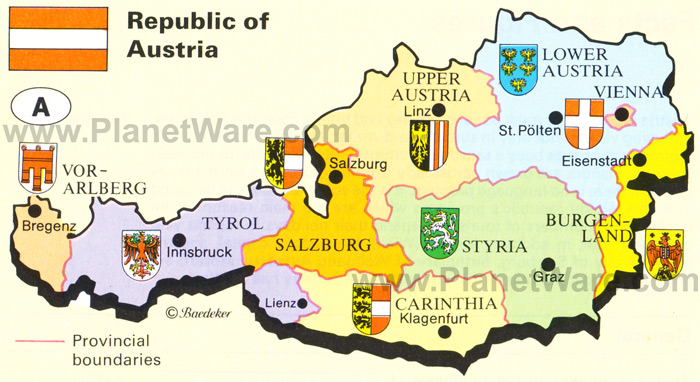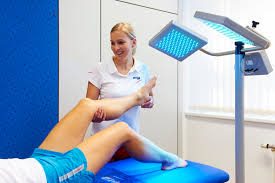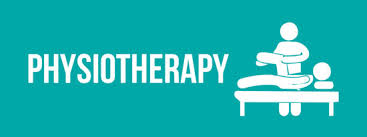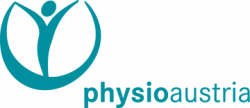Template:PT
Welcome to Worldwide Physical Therapy Practice: a focus on Primary Care Physical Therapy
This is a project created by and for the students in the School of Physical Therapy at the University of St. Augustine in St. Augustine Florida. Please do not edit unless you are involved in this project, but please come back in the near future to check out new information!!
Original Editor - Your name will be added here if you created the original content for this page.
Top Contributors - Lisa Devine-Keenan, Elaine Lonnemann, Sonia Ruiz, Admin, Didzis Rozenbergs and Andeela Hafeez
Patient Access to Physiotherapy or Physical Therapy Services / Entry Point[edit source]
Physical Therapists (physiotherapists) in Austria do not have direct access to patients. Patients in Austria who are seeking physical therapy treatment access physical therapy services via a referral with the freedom to decide intervention. That is, the patient requires a referral from another health professional, i.e. physician, etc., but the prescription does not necessarily contain specific intervention(s) to be used. Physiotherapists are able to assess, diagnose and treat, but they are not able to refer patients onto other specialists or services. Nor are they able to refer patients for diagnostic testing such as ultrasound, radiography or MRI. (1) However, if a physiotherapist is being seen for preventive services, no prescription is needed.
Physical Therapists practice in hospitals, rehabilitation centers, private practices. Physiotherapists can be self employed, or can work as an employees in hospitals, for physicians, at a medical group practice, i.e., in a primary care setting. (2) Additionally, physiotherapists perform home visits. Patients may seek physical therapy services due to an injury, or possibly rehabilitative services post orthopedic surgery, i.e. total hip replacement, etc., or neurologic events, i.e. CVA. Patients are also seen for sports and exercise counseling, ergonometric consulting, pregnancy care and childbirth. Geriatric patients are seen for mobility training and for the prevention of falls. Pediatric patients are treated for motor development issues, etc. (3)
Therapist Preparation[edit source]
Degree/Credentialing
[edit source]
In order to become a physiotherapist in Austria, prior to entering a physiotherapy program, a candidate must have completed 12 years of schooling. The physiotherapy education program is 3 years, and students receive a Bachelor of Science in Health Science - Physiotherapy Degree. Courses of Study include kinesiology, biomechanics, human movement sciences, anatomy, physiology , pathology, orthopedics, neurology, physiotherapeutic process of investigation, diagnosis, treatment and evaluation, physiotherapy in prevention, treatment and rehabilitation, science and research in physiotherapy, humans and social sciences basics, and structures and healthcare facilities. The training also involves several internships.
There are ten accredited degree programs in Austria, including Burgenland, Lower Austria, Vienna, Carinthia, Upper Austria, Salzburg, Styrla, Tirol and Vorolberg. Additionally, students can pursue a Masters Degree as well, and programs are available in Sports Physiotherapy (in cooperation with the University of Vienna), Musculoskeletal Physiotherapy (Danube University Krems) Cardiorespiratory Physiotherapy (Medical University of Graz) and Master in Physiotherapy ( FH Campus Wien). Currently there are no Doctorate Programs available in Austria. (1)
The scope of practice of physical therapy in Austria is defined by the Ministry of Health. There are standards of practice and a code of conduct. There is no registration required to practice and no continuing professional development required for membership. (1)
Specialization[edit source]
Specializations are not recognized in Austria but according to Physio Austria there are professional networks available in Geriatrics, Hippotherapy, Mental Health, Pediatrics,
Manual Therapy, Palliative Care and Hospice, Sports Physiotherapy, Uro, Procto and Obstetrics and Gynecology. (1)
Professional Associations[edit source]
The Austrian Physiotherapy Association has been a member of the ER-WCPT (European Region World Confederation for Physical Therapy) since 1967. Out of 7,000 practicing physiotherapists in Austria, 4201 are members of the Austria Physiotherapy Association, as of 2015. (1)
Information about the Patient Community[edit source]
Austria is a democratic republic covering 84 000 square kilometers. Austria is comprised of nine provinces (Länder) including Vienna as its capital. The country has a population of approximately 8.42 million inhabitants.
As of 2011, the life expectancy for a newborn girl is 83.4 years and for a newborn boy 78.1 years. The infant mortality rate is 3.6 deaths per 1,000 live births. A 60-year- old man has a remaining life expectancy of 21.7 years, a 60-year-old woman, 25 years. Cancer and circulatory illnesses are responsible for two-thirds of the deaths in Austria. (4)
Social/Cultural Influences[edit source]
In general, Austria’s population has some challenges related to health. Approximately 23% of the population smokes regularly. Additionally, 16% of the population demonstrates harmful use of alcohol. Almost 48% of the adult population is overweight. However, in response to a health survey conducted in 2006/07, 49% of men and women over 15 reported they exercised at least once per week, while 33% of men and 25% of all women reported they exercise at least three ties per week. The diet of the typical Austrian is also heavy with saturated fatty acids, salt and fats. (5)
In socially disadvantaged groups the rates of obesity have increased. Fifteen year old males showed an increase in obesity and people with lower levels of education are more likely to be obese. (4)
Austria follows the principle of subsidiarity, a social model in which the family’s responsibility for the care of dependents comes before the state’s responsibility. Patients, regardless of their income level, are entitled to claim long-term allowance payments if their care is expected to be needed for at least six months. Since most of the elderly are cared for by family, the family is entitled to respite care funds as well. (4)
Generally, Austria’s population is dispersed throughout the country as follows: one-third of the people live in the five largest cities - Vienna, Gratz, Linz, Salzburg and Innsbruck. The rest of the population resides in the small town and countryside.(6)
People living in the cities live in apartment houses, single-family homes or high rise buildings, while people living in the rural areas live in farmhouses on farms. Some farms have been in the family’s possession for centuries.
Austrian cooking is influenced by Germany, Czechoslovakia, northern Italian, and Hungary. Breakfast is usually bread and butter with jam and coffee. A mid morning snack could be a sausage served with mustard on a hard roll. Lunch is considered the main meal of the day and is usually a combination of a soup and a meat course, i.e., Weiner schnitzel (breaded veal) or pork, chicken, etc. Noodles and vegetables may be served with this meal, as well as salad. (6)
Initially Austrian society had three social classes, aristocrats, citizens and farmers. Government benefits as well as prosperity in the late twentieth century improved the standard of living for all Austrians, and now there are more middle class citizens. (6)
Marriage and family are considered very important in Austria, despite an increase in divorces. Couples with children receive time off from work to raise their children as well as assistance from the government until the children finish college or the equivalent. The Austrian education system is one of the best, and it claims to have a literacy rate of 99 percent. Elders are respected and revered by families. (6)
Delivery of Care[edit source]
The Austrian health care system has a large amount of easily accessible health care facilities. According to The Federal Ministry of Health report entitled, The Austrian Health Care System, in 2011 a total of 273 hospitals with about 64,000 beds were available for in-patient care. At that point in time about 23,000 physicians as well as more than 85,000 other health care professionals, were employed in hospitals. There are also ample out-patient clinics, 900, according to the report. Additionally, as of 2010, group practices for physicians were introduced to reduce waiting times and to offer more options for office hours. (5) “A fundamental characteristic of the Austrian health-care system is that all members of the population have relatively unrestricted access to all levels of care” (4)
Type of Health System[edit source]
According to a Health System Review of Austria by the European Observatory on Health Systems and Policies, “almost the entire Austrian population (99.9% in 2011) is covered by social health insurance, which grants access to a wide range of services” (4)
Citizens of Austria are assigned to health insurance based upon their place of residence and/or occupation. Health care in Austria is characterized by the cooperation of Austrian Parliament (which consists of the National Council and the Federal Council), the Federal Ministry of Health (BMG), the Federal Ministry of Labour, Social Affairs and Consumer Protection (BMASK), the social security institutions and advocacy groups (social partners: employers’ and employees’ representatives, as well as professional associations).(4).
The Health care system in Austria is based upon compulsory social insurance, and access to services is regulated by law, as per the General Social Insurance Act (ASVG).
In general, patients are allowed to choose their own physician, and physicians are not gate-keepers. Patients are free to access specialized in-patient treatment and can consult with out-patient departments of hospitals without prior consent from their physician or the health care fund. (5)
Funding for the Austrian Health System comes from public income generated through taxes, a combination of income-based social insurance contributions, and private payments including direct and indirect co-payments. (4) Of the aforementioned contributors social insurance is contributes 45% of health care expenditure. Out-patient care is almost completely funding by social insurance, whereas in-patient expenses are shared between the public sector and social insurance. By contrast, long term services are funded through taxes.
In short, as of 2013, approximately 76% of total health expenditure is borne by public sources (social health insurance and the Federal Government) and the 24% is from private health expenditure including (out of pocket payments by households, private health insurance companies, etc.) (5)
Payment System[edit source]
Patients in Austria can receive physical therapy services in either a hospital or a private practice area. If a patient receives physical therapy services in a hospital, the treatment is covered. In the private practice area, the healthcare service provider is able to determine the amount of the treatment costs. Treatment providers provide prospective patients with costs associated with treatment. If the therapist a patient is receiving services from has a contract with the patient ’s health insurance carrier, the costs are billed directly to the insurance carrier. If a patient receives services from a non contracted physiotherapist, the patient may have a 20% copayment. In the private practice area, the healthcare service provider is able to determine the amount of the treatment costs. (3)
An example of the fees of one private outpatient clinic located in Vienna are as follows: a standard 45 minute appointment costs 60 euro; a 30 minute session costs 45 euro. a standard initial assessment and treatment lasting 60 minutes, costs 80 euro. According to this practice, a patient is able to recoup 35% to 80% of the cost, with an appropriate doctor’s referral. This therapist also makes home visits for 95 euro for a 60 minute session. (7)
References[edit source]
1. Austria: A Profile of the Profession. https:www.wcpt.org/node/26865/cds
2. Budesministerium fur Gesundheit. Healthcare Professions in Austria. https:bmg.gv.at/cms/home
3. gesundheit.gv.at/Portal.
4. European Observatory on Health Systems and Policies. Austria Health System Review. Health Systems in Transition 2013;15(7) 1- 292
5. Bundesministerium fur Gesundheit. The Austrian Health Care System, Updated Version 2013. https:bmg.gv.at/cms/home/attachments/3/4/4/CH1066/CMS1291414949078/austria_health_care_key-facts_2013.pdf
6. www.everyculture.com/A-Bo/Austria.html
7. www.wein-physio.at












